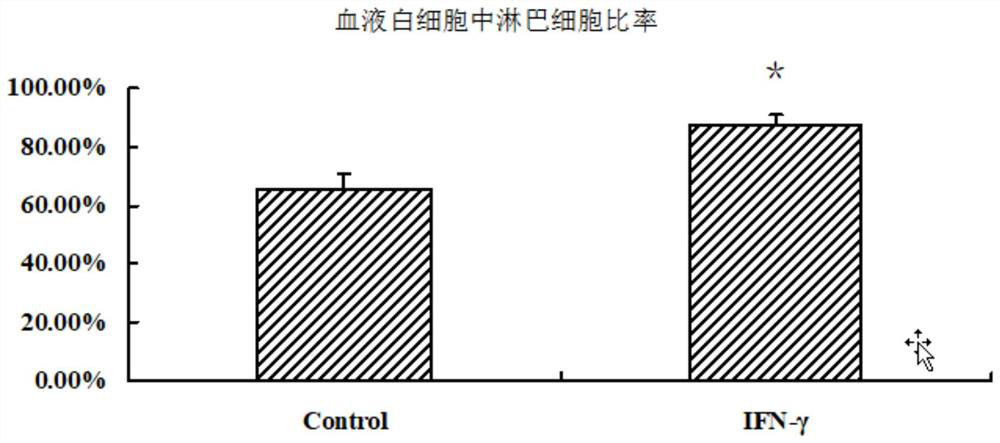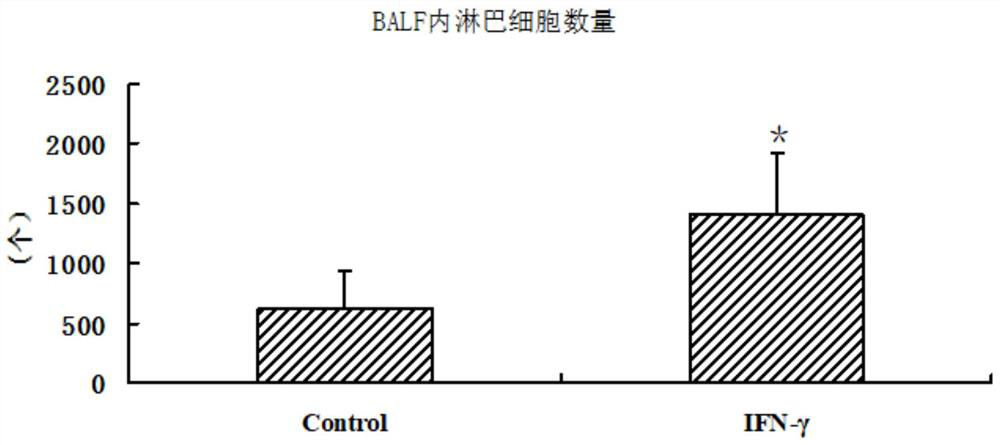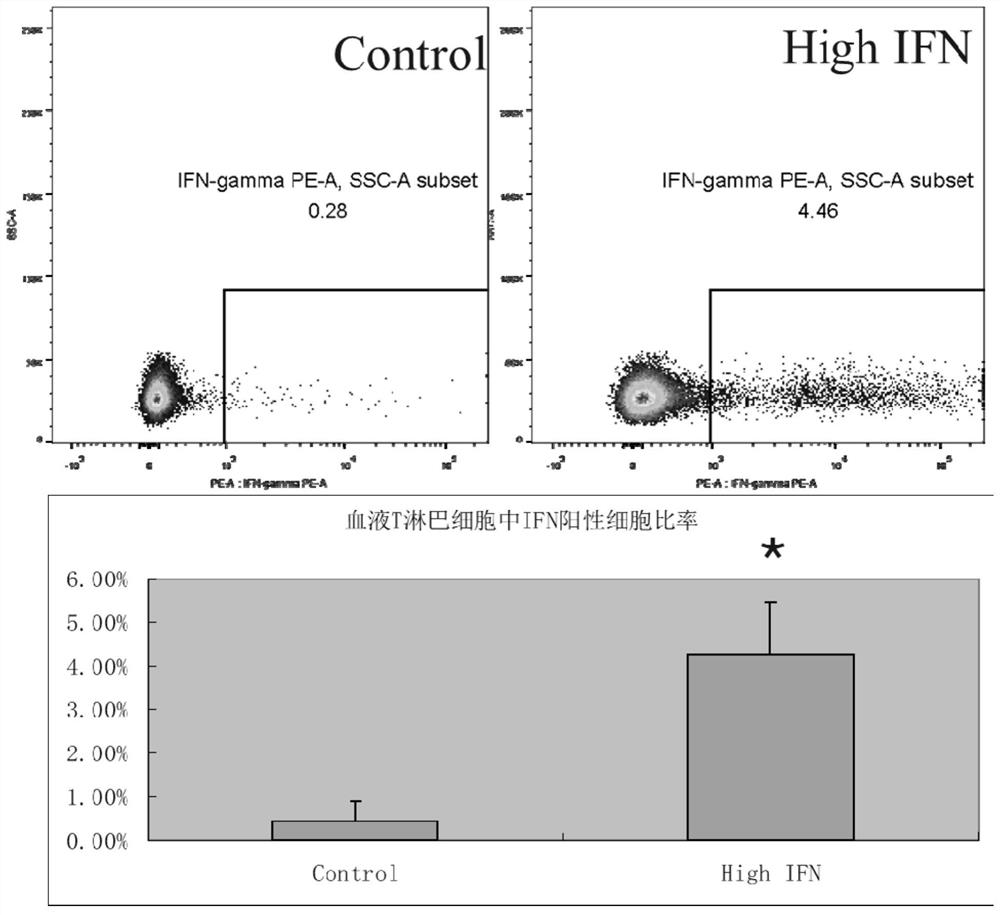Application of CXC chemokine receptor 3 as cough drug target
A chemokine receptor and chemokine technology, which is applied in the screening of compounds, drug combinations, and determination/examination of microorganisms, etc., can solve the problems of unknown mechanism and no specific drugs yet
- Summary
- Abstract
- Description
- Claims
- Application Information
AI Technical Summary
Problems solved by technology
Method used
Image
Examples
Embodiment 1
[0083] Effects of IFN-γ pretreatment on lymphocytes in peripheral blood and bronchoalveolar lavage fluid (Bronchoalveolar lavage fluid, BALF) of mice.
[0084] 1. Experimental animal grouping and drug administration method
[0085] Twenty mice were randomly divided into two groups, and the mice were pretreated with different solutions: normal saline control group and IFN-γ group (25 μg / ml, using mouse-derived IFN-γ).
[0086] Mice were anesthetized with chloral hydrate, and each mouse was given 50 μl of normal saline containing the above-mentioned modeling agent by intranasal drops; once a day, for five consecutive days, and then sacrificed by acute bloodletting after deep anesthesia with 1% pentobarbital sodium , so as to obtain peripheral blood and BALF specimens.
[0087] 2. Differential counting method of peripheral blood and BALF cells
[0088] The peripheral blood and BALF specimens were made into smears, and the cell smears were stained with hematoxylin-eosin, so as t...
Embodiment 2
[0092] The effect of IFN-γ intranasal drops on CD3 in mouse peripheral blood and lung tissue was analyzed by flow cytometry + IFN-γ + The influence of the proportion of T lymphocytes, the grouping of experimental animals and the way of administration are the same as before.
[0093] 1. Preparation of peripheral blood mononuclear cells (PBMC)
[0094]Take the left lung tissue of each mouse, add 0.6ml of digestive juice, fully grind and cut into pieces, lyse in a water bath at 37°C for 40 minutes, blow and beat until no lung tissue is visible to the naked eye, filter through a filter, and centrifuge (800g, 5 minutes, 4 ℃), placed in a 4 ℃ refrigerator for later use. Use the lymphocyte separation medium Ficoll to carry out gradient centrifugation on the peripheral blood and lung tissue suspension (800g, 25 minutes, 4°C, rising speed: 7, falling speed: 0), take the middle clear cell layer after gradient centrifugation, split red (1X Lysis red solution, 1ml, protected from light...
Embodiment 3
[0100] Effects of IFN-γ pretreatment on the expression of CXC chemokine IP-10 in the lungs of mice.
[0101] 1. Specimen Preparation and Immunofluorescence Staining Method
[0102] The middle lobe of the right lung of the mice was taken to make lung tissue frozen sections, which were stored in a -80°C refrigerator. Take out the slice and let it dry at room temperature for 30 minutes, then wash with PBS 3 times, 5 minutes each time, to remove OCT; circle the tissue to be stained with a histochemical oil pen, in order to minimize the scope of subsequent antibody incubation , so that the antibody can be effectively incubated; 0.3% PBST permeabilized for 15 minutes; PBS washed 3 times, 5 minutes each; 5% donkey serum blocked for 30 minutes; then incubated with IP-10 antibody, placed in a 4 ° C refrigerator overnight; remove the slice After rewarming at room temperature for 30 minutes, wash with PBS 3 times, 5 minutes each time; incubate the corresponding secondary antibody at roo...
PUM
 Login to View More
Login to View More Abstract
Description
Claims
Application Information
 Login to View More
Login to View More - R&D
- Intellectual Property
- Life Sciences
- Materials
- Tech Scout
- Unparalleled Data Quality
- Higher Quality Content
- 60% Fewer Hallucinations
Browse by: Latest US Patents, China's latest patents, Technical Efficacy Thesaurus, Application Domain, Technology Topic, Popular Technical Reports.
© 2025 PatSnap. All rights reserved.Legal|Privacy policy|Modern Slavery Act Transparency Statement|Sitemap|About US| Contact US: help@patsnap.com



